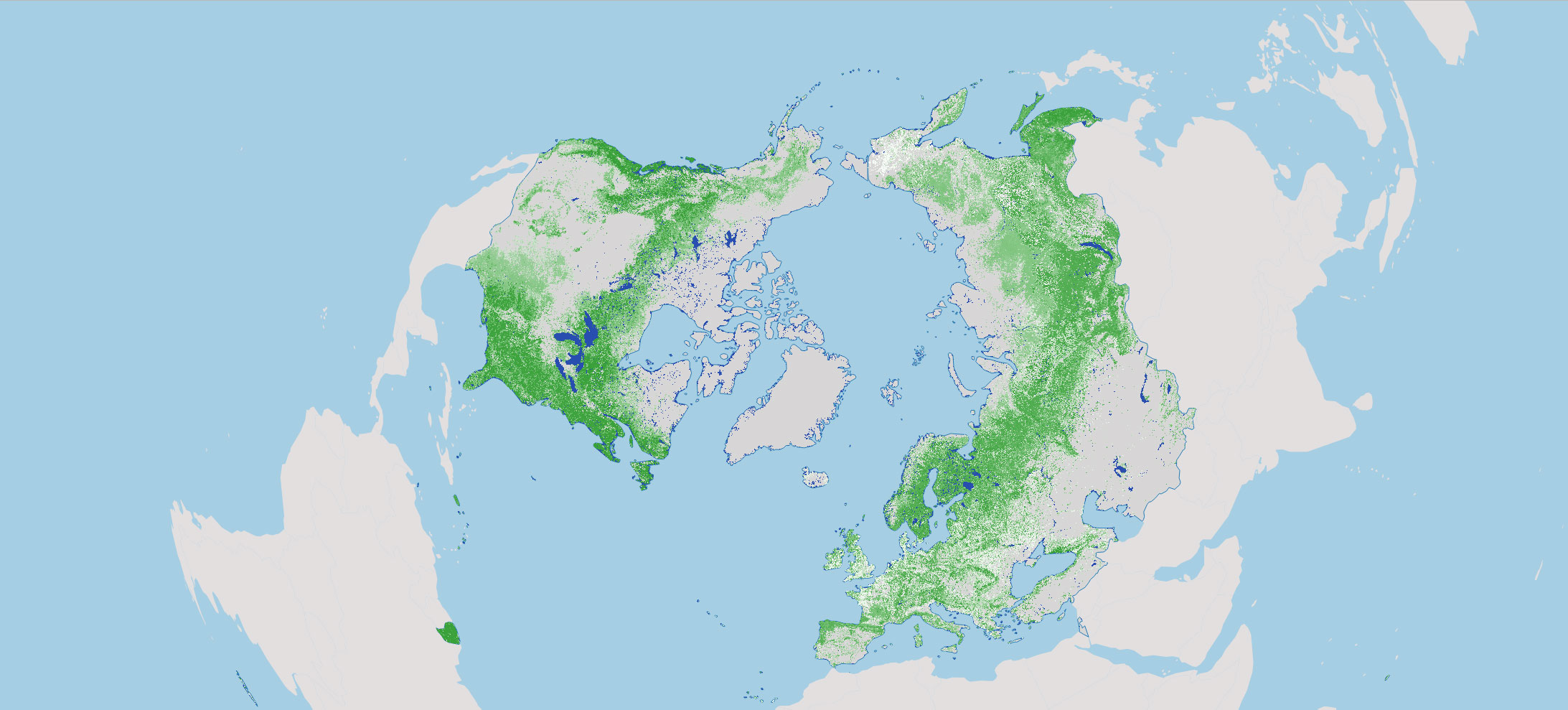
The UNECE region stretches from North America in the west, via Europe, to the Caucasus and Central Asia and the Russian Federation, in the east. There are 56 member States.
There are 1.71 billion ha of forest in the UNECE region, accounting for 42 per cent of forests worldwide. Overall, forest covers 37 per cent of the region’s land area, though forest cover varies from almost seventy-three per cent in Finland , to as little as four per cent in the countries of Central Asia. Forest area in the UNECE region has increased in the last three decades, growing by about 33.5 million ha, an equivalent of the total area of Germany.
Boreal forests, known also as taiga, (evergreen cold-tolerant forests located in North America, Europe and Asia, between temperate forest and tundra) make up 63 per cent of the region’s forest area. Temperate forest (forests cycling through all four seasons), located in North America, Europe and Asia, account for 29 per cent. The remaining seven per cent are classed as sub-tropical forest. The Russian Federation, Canada, and the United States of America account, together, for 86 per cent of all forest in the UNECE region.

Between them, the countries of the UNECE region produce around 60 per cent of world output of industrial roundwood, sawnwood and wood pulp, almost half of paper and paperboard and more than one-third of all wood-based panels. Almost 90 per cent of global sawnwood exports and 76 per cent of paper exports come from this region . In addition to their economic value, forests contribute significantly to supporting livelihoods, especially in rural communities.
Forests are vital to maintaining the health of our planet, protecting water and air quality. The ECE region has 206 million ha of forest (more than half the global total) that are recognized as playing a key role in conserving soil and water resources. Additional 123 million ha of forests enjoy formal protected status (roughly seven per cent of all forests in the region) primarily for the biodiversity conservation. This may be because they are in water catchments, or fragile mountain landscapes, or they may be key habitats for a significant proportion of plant and animal species, many of which are critically endangered, or facing extinction.
Looking to the future, forests can play a key part in mitigating climate change, by removing atmospheric carbon and locking it up in wood. Nurturing forests across the region is essential.